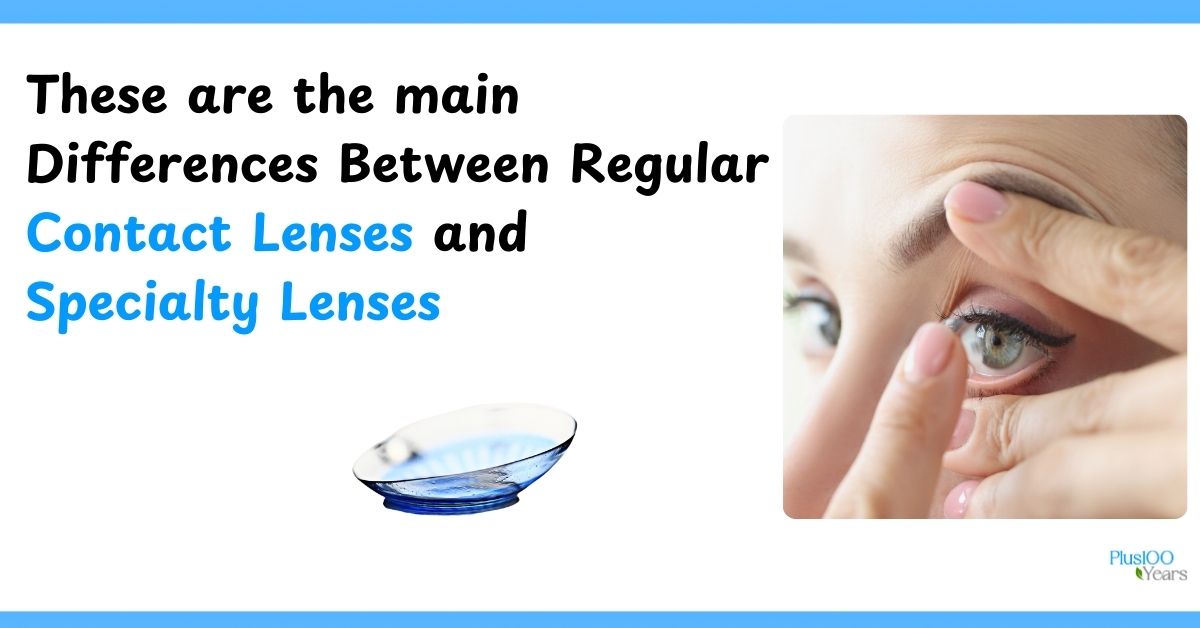
Published: 08-10-2024
Contact lenses offer an alternative to eyeglasses and help to correct imperfect vision. Optometrists may recommend using regular contact lenses designed to fit over your cornea and correct refractive errors like myopia and hyperopia.
Your optometrist can also customize specialty lenses for specific eye conditions like severe astigmatism and keratoconus. Here are some differences between regular contacts and specialty lenses:
Purpose and Targeted Conditions
The designs of regular contacts work to correct general refractive errors like nearsightedness, farsightedness, presbyopia, and astigmatism.
Also known as standard lenses, regular contact lenses come in daily, weekly, and monthly replacement schedules.
Daily disposable lenses offer convenience and reduced risk of infection because you throw them away at the end of the day.
Weekly and monthly disposables require proper cleaning and storage and can go through several uses before you need replacements.
Regular lenses usually don’t require professional fitting because they come in standard shapes and designs. You can wear, remove, clean, and store them on your own.
Specialty contact lenses are designed to address complex eye conditions that don’t respond to regular lenses.
Your optometrist can customize specialty lenses to treat severe dry eye, corneal scarring, keratoconus, severe astigmatism, and post-LASIK surgery corrections.
Specialty lenses also address specific needs like cosmetic enhancements and are designed using custom measurements.
Regular lenses usually offer more colored varieties for cosmetic performance, while specialty lenses are geared toward therapeutic and medical use.
Some prosthetic designs address specific eye disfigurement. Specialty lenses also require a detailed fitting and removal process performed by your optometrist.
Lens Design and Material
Regular contact lenses are made from soft hydrogel or silicon hydrogel. The material allows oxygen to pass through to your cornea for enhanced comfort and eye health.
Regular lenses have a spherical design that covers your cornea and offers the same lens power across the entire frame.
The soft material also retains some water and helps to reduce eye dryness. Regular lenses have limited sizes and curvatures because optometrists design them based on the average eye shape and common conditions.
If you find standard lenses uncomfortable, your optometrist can customize specialty lenses based on your eye measurements and specific needs.
Specialty lenses feature firmer materials and offer sharper vision and improved eye health for specific conditions.
The lenses also have enhanced oxygen permeability and help reduce the symptoms of dry eyes. Your optometrist can customize different types of specialty lenses, including toric, bifocal, multifocal, and scleral.
Toric lenses address severe astigmatism, while bifocal and multifocal lenses treat presbyopia.
Scleral lenses are large and fit over the cornea and the sclera. Optometrists can also customize ortho-K lenses worn at night to help reshape your cornea and reduce the need to wear the lenses during the day.
Get the Right Contacts For Your Needs
Eye conditions, such as dry eyes, astigmatism, and corneal irregularities, are addressed using contact lenses as recommended by your eye care doctor.
You can use standard lenses or find an experienced optometrist to design custom lenses for more complex eye conditions.
Contact an optometrist today to learn more about regular and specialty contacts.
Add new comment